Conference by Gwenith Penry – Tagging marine mammals to address conservation issues
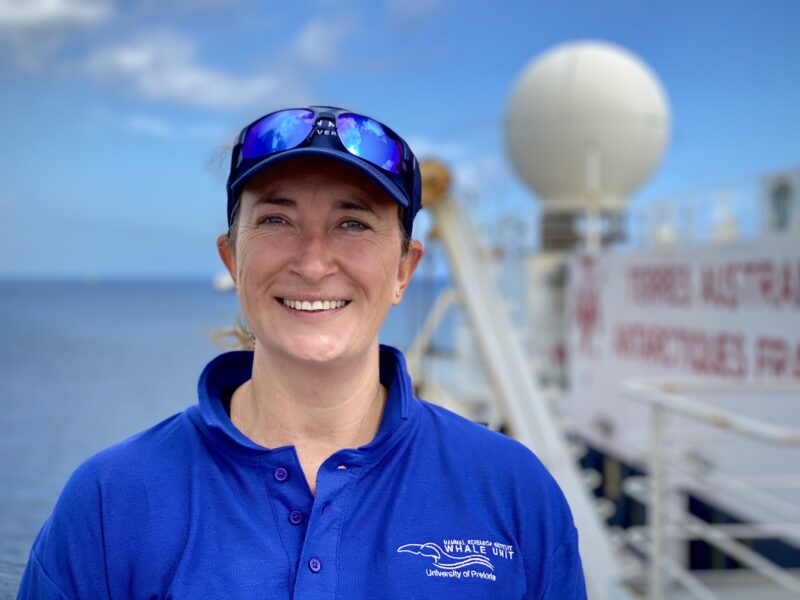
April 22nd, 2022, R/V Marion Dufresne, off the Reunion Island
Authors: Ioannis Kalaitzakis and Salomé Pellé
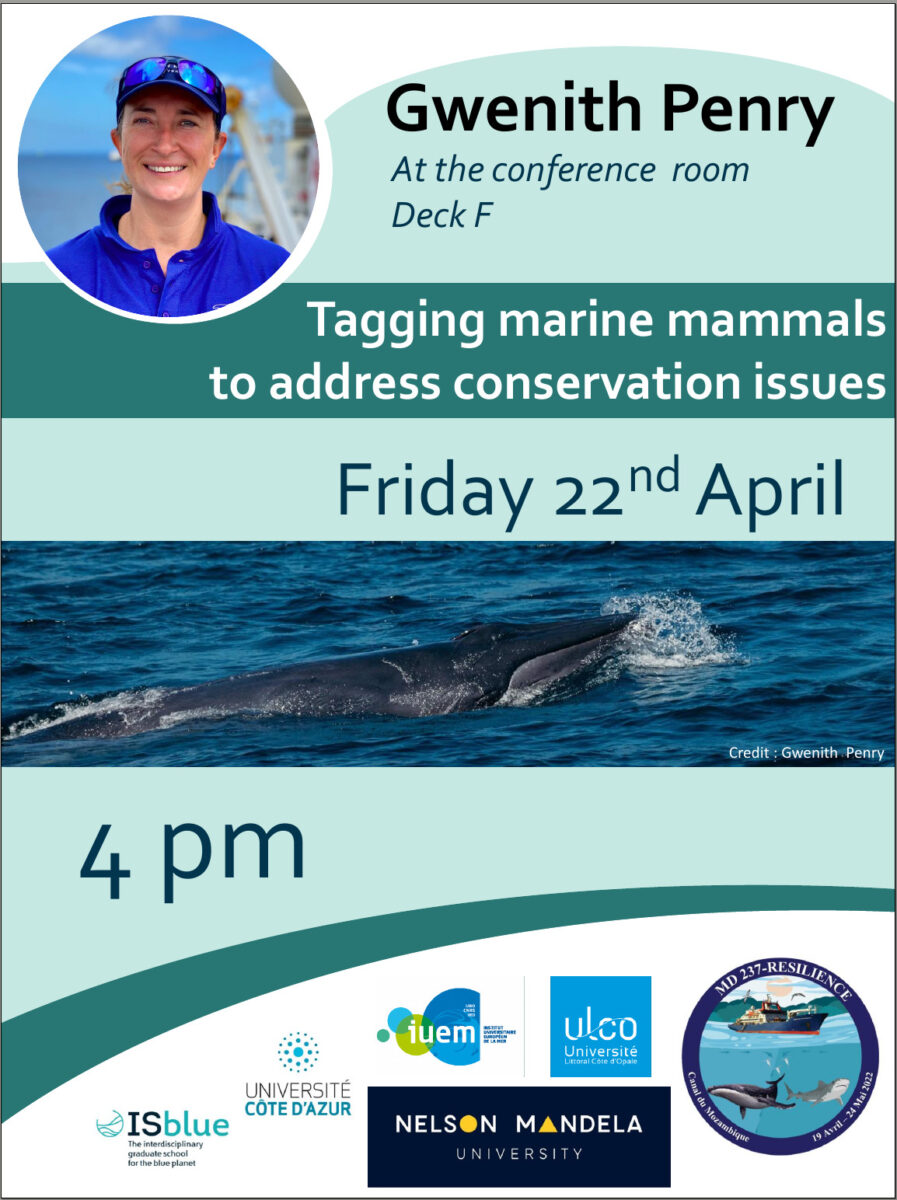
Gwenith Penry is a marine mammal scientist at the Nelson Mandela University in South Africa. Her research focuses on Bryde’s Whale, Balaenoptera brydei, specifically on the inshore continental population in South Africa, which consist of around 600 individuals.
Bryde’s Whale are cetaceans, in the Artiodactyla order, 13-14 meters long and weighting 15.000 kilograms. They can be distinguished by the characteristic three ridges on the top side of their head (figure 1). They are typically solitary and antisocial and they move relatively fast, which makes studying these animals challenging. These whales do not migrate and they do not have specific breeding and feeding seasons. This species feeds on small pelagic fish such as sardine and anchovy and it also performs the typical “Lunge” feeding behavior. Due to their shy nature there is still plenty of crucial information we lack regarding this species, especially their underwater behavior. The South African inshore population is classified as “Vulnerable” on the National Red List , which highlights the importance of its study.
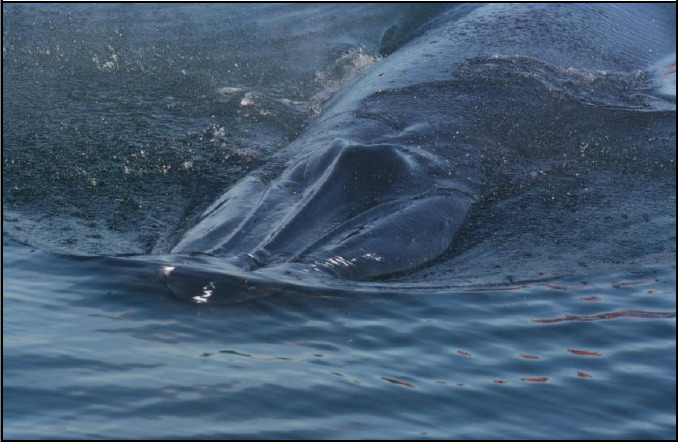
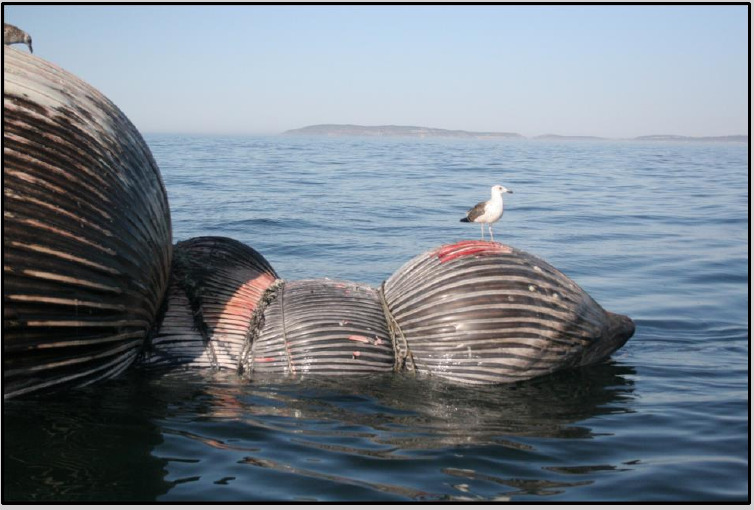
The main threats this species faces are ship strikes, entanglement to fishing gear (figure 2) and reduced prey availability. The last one due to the collapse of fish stocks caused by climate change and overfishing. It has been observed that between 2014 and 2019, 17 Bryde’s whales were entangled in fishing gear, 10 of them were fatal and 7 of these were in octopus fishing gear. Most entanglements were through the mouth, showing that this might have occurred during feeding behavior.
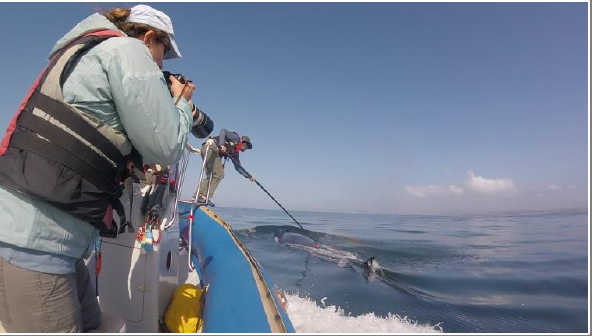
In order to further study the species, a tagging project was initiated in 2018 by deploying data loggers on the whales back (figure 3). These devices show the location of the animal in real time using satellite data. Additionally, they record other parameters such as depth, accelerometer but also video record the animal. The researchers successfully deployed 10 devices which stayed attached for up to 20 hours. This project allowed them to acquire new data on this poorly known species such as the feeding behaviors of the animal and their diving profile. These species-specific data contributed to the modification of fishing gear. The first deployment of this new gear showed no hazard to the whales. This highlights how conservation decisions can be driven by species specific data to achieve high efficiency.
 Attention, vous utilisez un navigateur peu sûr !
Attention, vous utilisez un navigateur peu sûr !